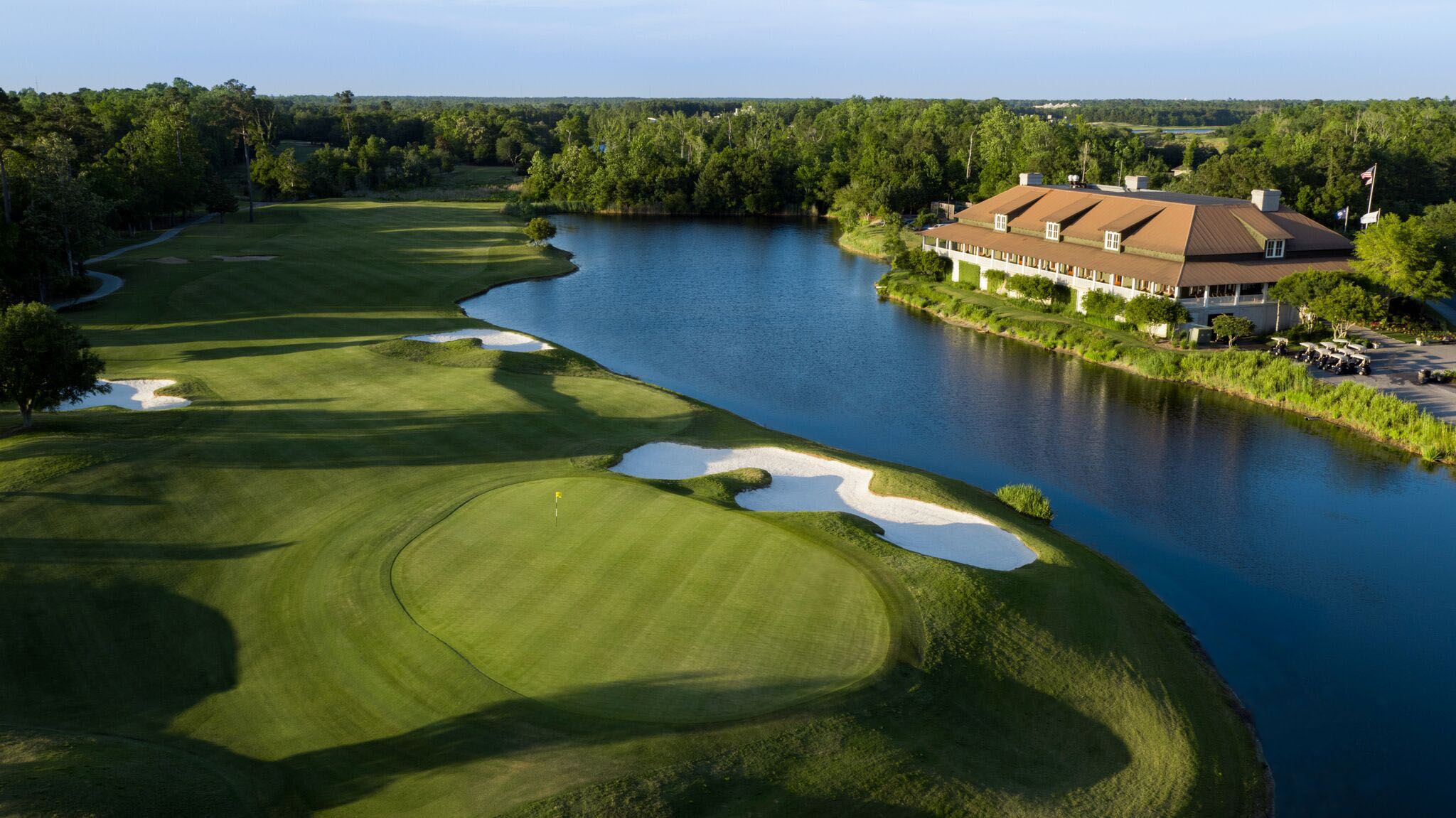
Barefoot Resort
With nearly 100 courses, plenty to do besides play golf, and a golf vacation for every budget, it’s hard to beat Myrtle Beach, S.C.
The Grand Strand is also fairly easy to get to, as it’s just a few hours from the big metropolitan areas of the Northeast. Plus, there are more flights into Myrtle Beach International Airport than ever before.
There is also a wide variety of resorts and accommodations in Myrtle Beach, one of the most affordable beach destinations in the United States. And there are all sorts of entertainment options, ranging from blue collar spots to great family venues like The Carolina Opry and Alabama Theatre.
But with so many courses, how do you choose? What follows are some of our favorite spots for golf on the Grand Strand. Some have several courses, while others are stand-alone. What they all have in common is fun. Here’s a look:
Barefoot Resort
Known for its “Fantastic Four” golf courses, Barefoot Resort — named among America’s best golf resorts with its fantastic accommodations and amenities — can be a complete golf vacation all to itself. The four courses are designed by a killer lineup of architects — Greg Norman, Davis Love III, Tom Fazio, and Pete Dye. They are always in top shape and very different from each other. Many tout the Fazio Course as the best, but it seems everyone seems to have their favorites. The Fazio, though, is the highest ranked of the four according to national pubs. It has those signature Fazio bunkers and greens, and is perhaps the most visually appealing of the four. The Love Course might be the most surprising, with its Pinehurst-like feel, and certainly holds its own with the others. The Norman Course is no slouch either, highlighted by seven holes that play along the Intracoastal Waterway. And finally, there’s the Dye Course, which has Dye’s famed railroad ties, waste bunkers and visual deception off the tee. The Dye played host to the Hootie and the Blowfish’s After the Masters Celebrity Pro-Am for a decade and a half.
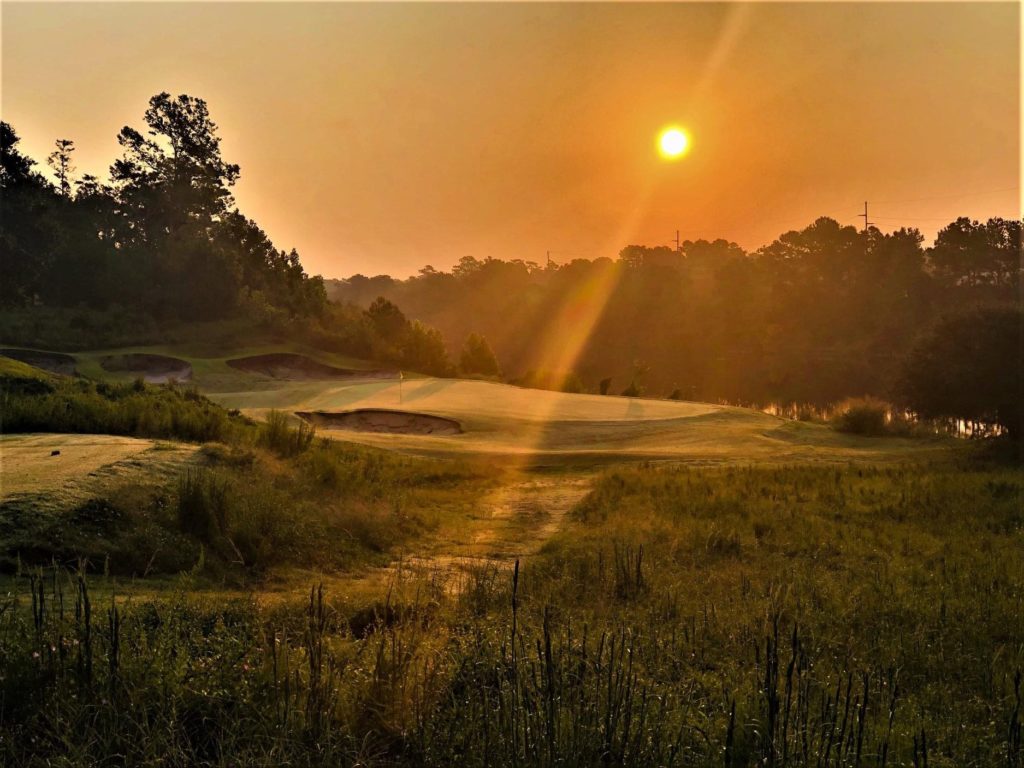
Barefoot Resort
Caledonia Golf & Fish Club
Routinely listed as the best and favorite golf experiences on the Grand Strand is Caledonia Golf & Fish Club, the late, great Mike Strantz’ first design, and certainly one of the top two of his incredible, but limited portfolio. Located on Pawleys Island and built on the site of an old Colonial rice plantation, the course is both incredibly beautiful and strategic, with one interesting hole after another. It isn’t exceptionally long — a par 70 that plays just over 6,500 yards — but it’s certainly not easy as golfers have to navigate the old Spanish-moss covered live oak trees, lakes, ponds, streams, and creative bunkering. Caledonia’s Grillroom, with its views of the rice fields, Intracoastal Waterway, and picturesque finishing hole, is a great way to unwind after your round.
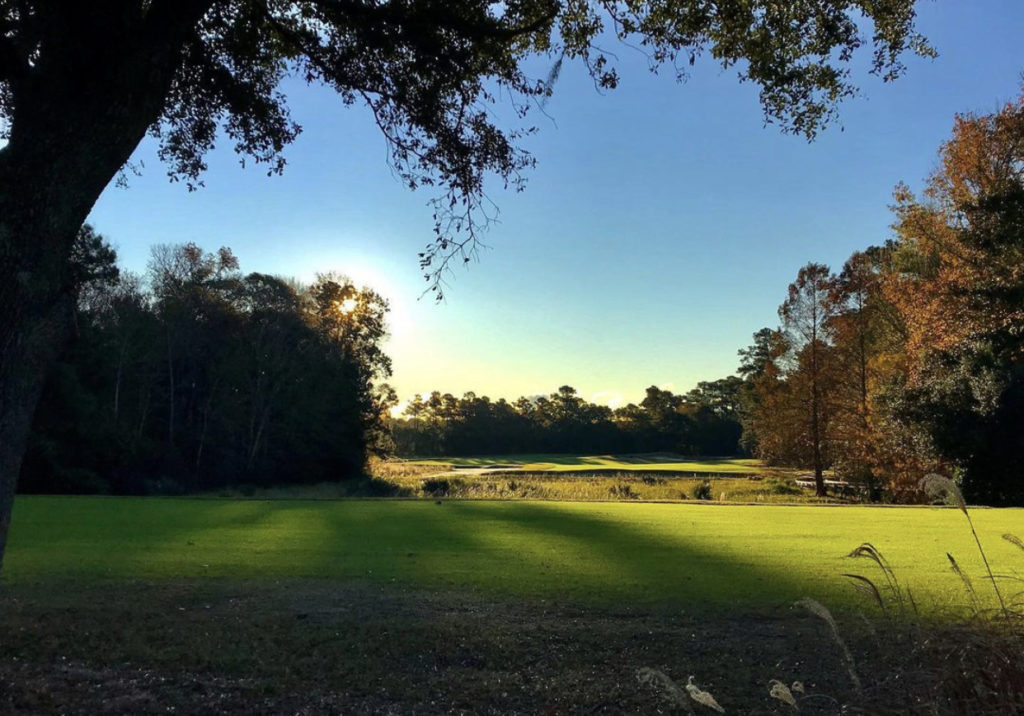
Caledonia
True Blue Golf Club
Caledonia’s sister course, True Blue Golf Club (also designed by Strantz), is very different, but arguably equally as intriguing. It’s the harder of the two courses — and was in fact softened during a renovation — and a good bit longer at 7,126 yards from the back tees. The fairways can be generous, near 100 yards wide in places, and the greens are huge as well. But there are plenty of pitfalls along the way, including lakes and ponds, treacherous bunkers, rolling terrain and thick trellises. It’s a beautiful and memorable golf experience that includes a great clubhouse and an 18-acre practice facility.
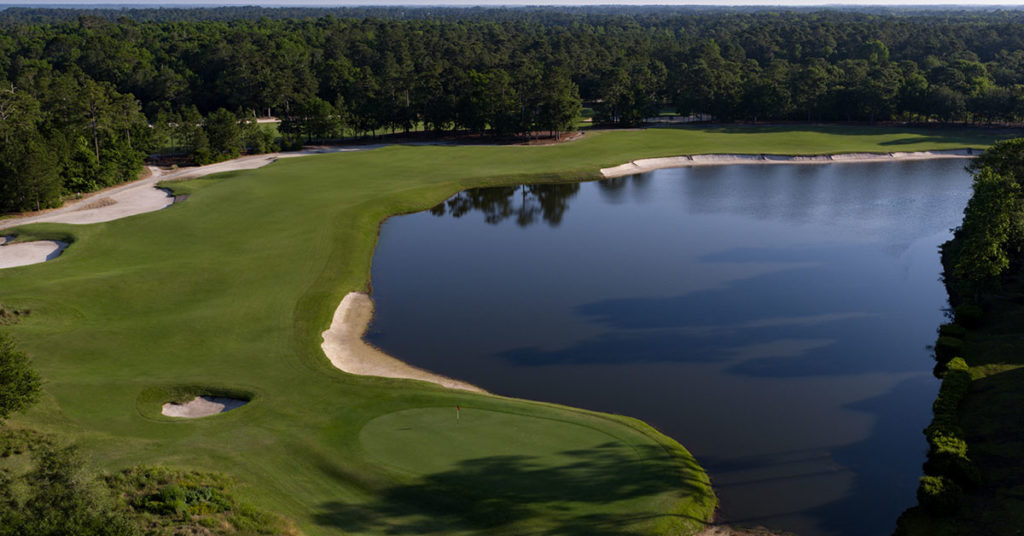
True Blue
Tidewater Golf Club
Located between the Intracoastal Waterway and Cherry Grove Inlet in North Myrtle Beach, Tidewater Golf Club offers a challenging layout against a beautiful backdrop. Nine holes play along the water, including four that reside along Cherry Grove, a tidal inlet that empties into the Atlantic Ocean. One of those holes, the par-5 13th, affords a great ocean view as it goads golfers into trying to reach the green in two with water down the entire right side of the hole. Playing just over 7,000 yards from the tips, this Ken Tomlinson design is enjoyable from start to its difficult finish, highlighted by the 200-yard par-3 17th that plays over an almost always-windy marsh.
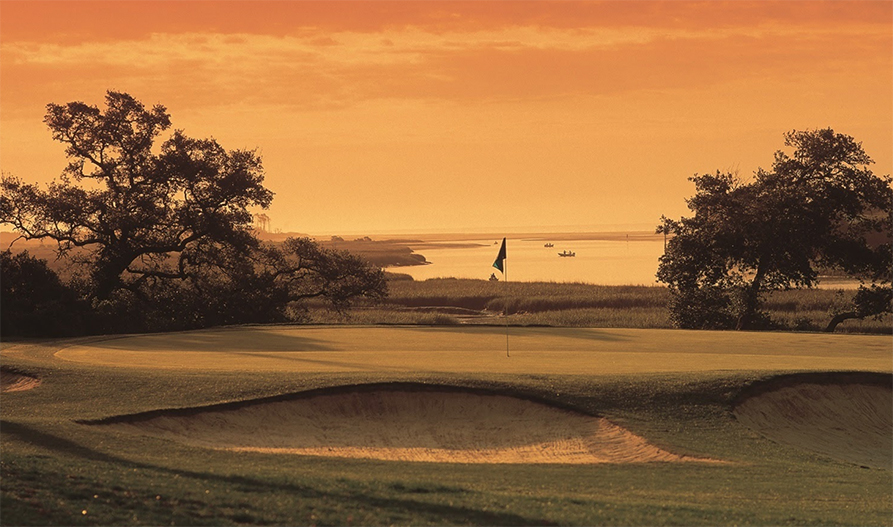
Tidewater
TPC Myrtle Beach
Host of the 2000 Senior PGA Tour Championship (now PGA Tour Champions) won by Tom Watson, TPC Myrtle Beach is a Tom Fazio design that’s a popular choice on the south end of the Grand Strand in Murrells Inlet. The 7,000-yard course works through mature pines and hardwoods and around streams and ponds to create an exacting challenge for golfers. The signature hole is the par-3 17th, which plays nearly 200 yards to a peninsula green. The par-5 18th, a great risk-reward opportunity, is considered one of the best finishing holes in the Myrtle Beach area. Good practice facilities combined with a terrific clubhouse and the TPC Grille complete the experience.
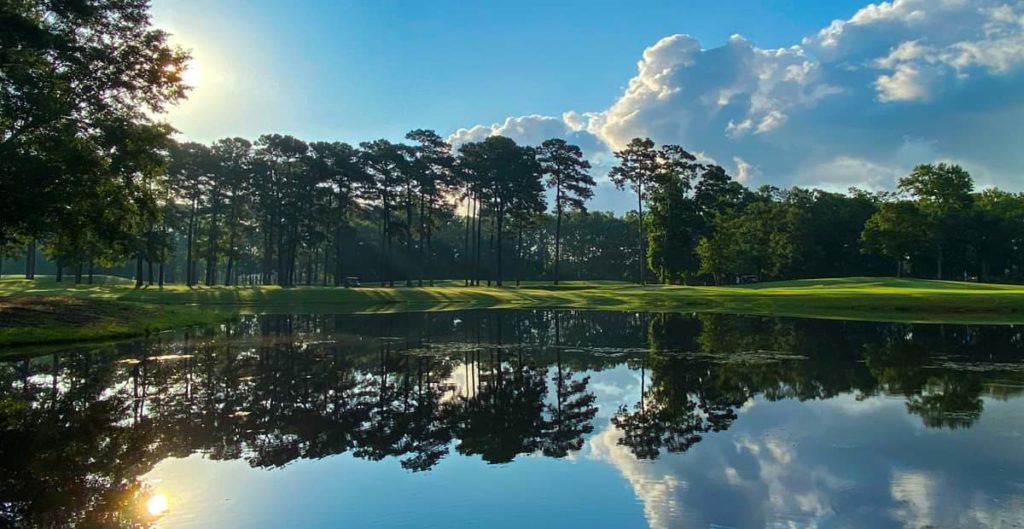
TPC Myrtle Beach
International World Tour Golf Links
Yes, Myrtle Beach has a replica course, and it’s a pretty good one. What’s unique about this one is that it has two distinct nines that feature holes from all over the world. The Open Nine showcases holes that pay tribute to a variety of courses, including the first and ninth holes that are much like the first and 18th at the Old Course at St. Andrews. The back nine emulates holes from the four major championships, and includes the Postage Stamp par-3 at Royal Troon, Augusta’s 12th, and the par-4 18th at Olympic Club, just to name a few. Each hole has a plaque explaining the history of the original. The course was designed by Melvin F. Graham, whose uncle was none other than the Rev. Billy Graham.

International World Tour Golf Links
The International Club
While the name of the course might imply that The International Club might be a collection of replica holes from around the globe, that’s really not the case. The international part of the facility is that the holes are dedicated to different parts of the world, but really it’s just a terrific Low-country layout with a fantastic clubhouse that has a distinct European feel. You’ll see flags from different countries around the world as you drive up to the bag drop. The course was designed by William Byrd and opened in 2000. The near-7,000-yard layout is routed through live oaks and around ponds, marshes, and creeks. The signature hole is the par-3 11th, which features a mostly island green, but the par-4 15th is probably the most difficult. It has water on both sides of the fairway.
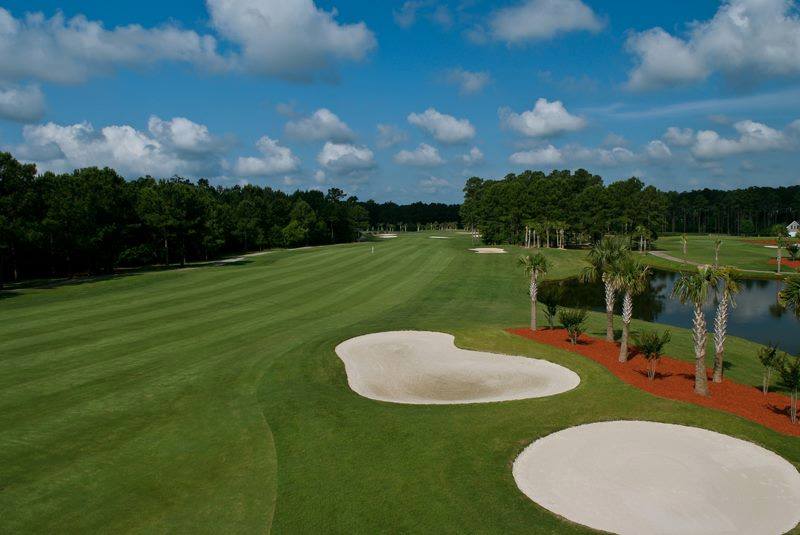
The International Club
The Witch (and The Wizard, Man ‘o War)
One of the most challenging and unique courses in Myrtle Beach is The Witch Golf Club, a wickedly-challenging layout by Dan Maples. It plays a little under 6,800 yards, but this tight par-71 course, which traverses wetlands and forest over 500 acres, has a 133 slope. With a stunning finishing stretch, The Witch is a must-play for any serious golfer. The course is owned and managed by Mystic Golf, which has two other Maples courses that are loads of fun, affordable, and located right next to each other, but a few miles from The Witch. The Wizard gives off a Highland-Scottish links sort of vibe, while the other course, Man O’War, was actually built over a lake, essentially meaning the fairways and greens are islands. Don’t fret, though, there’s plenty of land to find off the tee. Oh, and while The Witch has Bermuda greens, because of the open air quality of Man O’War and The Wizard, those courses are the only two in Myrtle Beach with bentgrass.
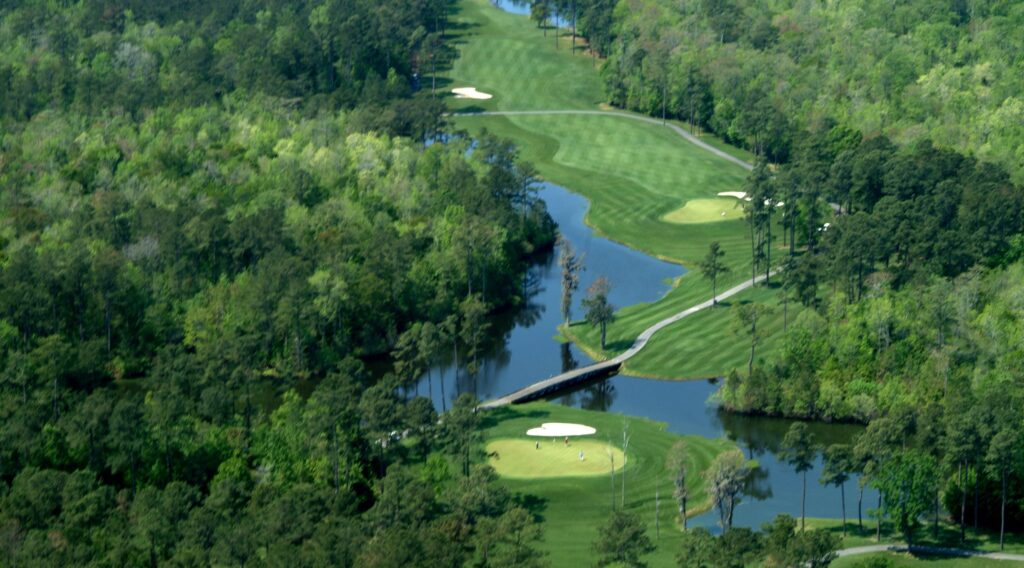
The Witch
Legends Resorts
Five courses are encompassed within the Legends Resorts, three of them centrally located right off Highway 501 in Myrtle Beach. The other two are Oyster Bay Golf Links on the northern end of the Grand Strand, in Sunset Beach, N.C., and The Heritage Club, which is on the southern end in Pawleys Island. So yes, the courses stretch over two states. Of course, you could just play the three courses — the Heathland, Moorland and Parkland layouts — that are located within the main Scottish-inspired Legends Golf Resort. The Heathland is a Tom Doak-designed links-style golf course; the Moorland is a nifty P.B. Dye design; and the Parkland is a more traditional course with a nice variety of holes. Dan Maples and Larry Young are behind the Oyster Bay design, which features marshes, lakes, enormous bunkers and undulating greens. And the Heritage Club is also a Maples design, laid out along the beautiful Waccamaw River Trail.
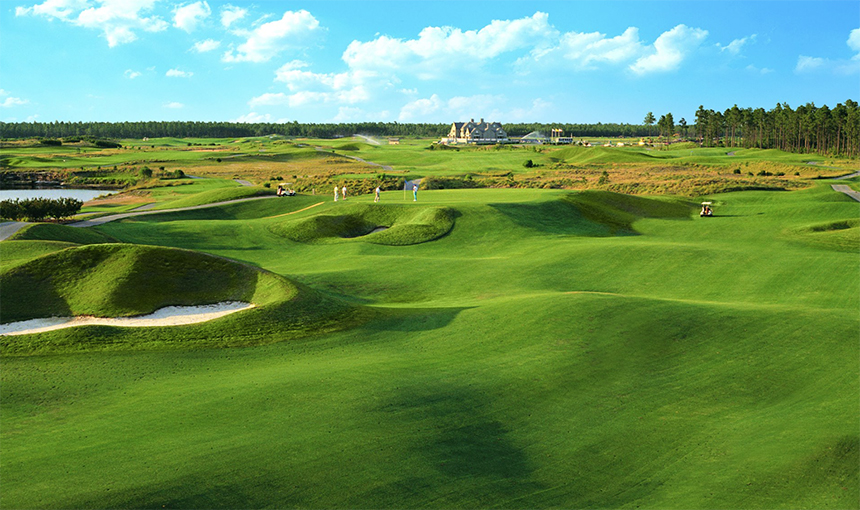
Legends Parkland
The Dunes Golf & Beach Club
Like a few Myrtle Beach courses, The Dunes Golf & Beach Club has been named among Golf Digest’s top 100 courses open to the public. This Robert Trent Jones gem has been around since the 1940s. Windswept with lagoons, lakes and ocean views, the course has weathered well over the years with several renovations and a great history. The most famous hole is the par-5 13th, called “Waterloo.” The nearly 600-yard hole doglegs around a lake in a manner that even the longest hitters can’t reach this green in two. The longtime home of the Golf Writers Association of America Championship, there’s a plaque commemorating the highest score on the hole by a competitor (27) in the GWAA, which staged its event there from 1954-2005. The Dunes Club has more credentials than the GWAA though, having hosted the 1962 U.S. Women’s Open, and the Senior PGA Tour (now PGA Tour Champions) Championship from 1994-1996.
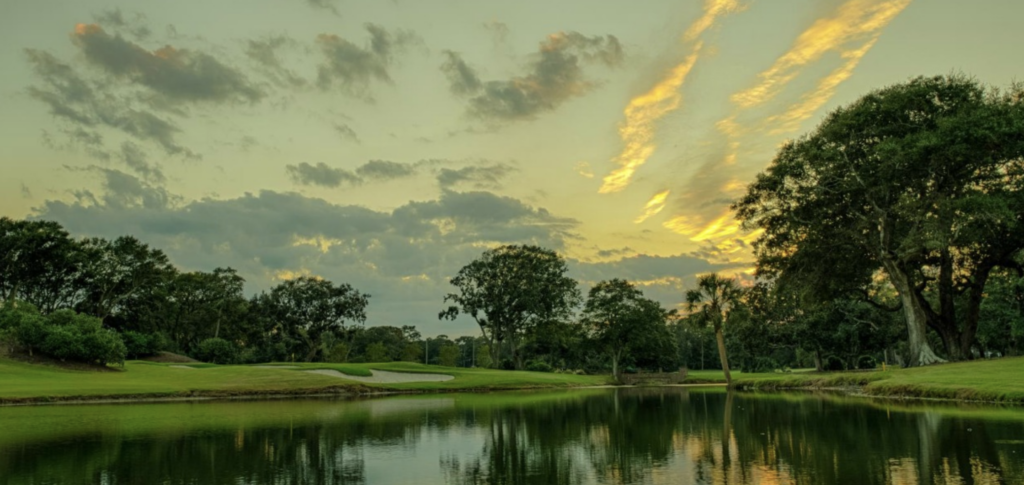
Dunes Golf & Beach Club
Also worth playing . . .
Arcadian Shores (Rees Jones first solo design); Myrtle Beach National (King’s North, South Creek, West Course); Sea Trail Maples and Byrd golf courses; and Prestwick Country Club, a collaboration between Pete Dye and son, P.B. Dye.
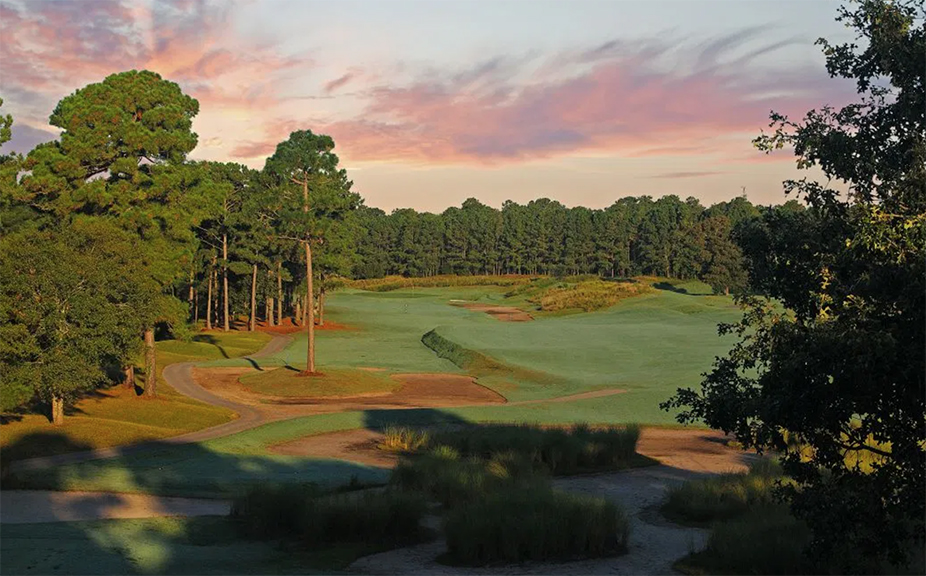
Prestwick

